Ironton Book Store
The Ironton Book Store was founded on April 22, 1852. The store was originally located across from the Ironton Register. A member of the John Campbell family was the founder.
It moved to its new location on 1880.
At one time, the Ironton Book Store was owned by the Murdocks, a founding family of Ironton.
Dr. W. F. Marting was an owner of the store. He sold the store to Sam Bowman.

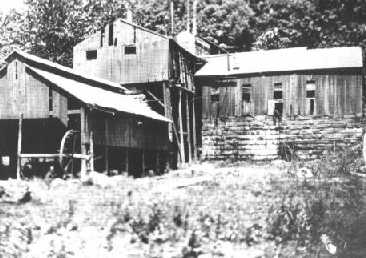 Center Furnace was built in 1836 in Lawrence County, Ohio by William Carpenter and others. It had a 16 ton capacity and the stack was 40 feet tall. It is believed the furnace was sold to William D. Kelly in 1862, but so far no records have been found on the sell.
Center Furnace was built in 1836 in Lawrence County, Ohio by William Carpenter and others. It had a 16 ton capacity and the stack was 40 feet tall. It is believed the furnace was sold to William D. Kelly in 1862, but so far no records have been found on the sell.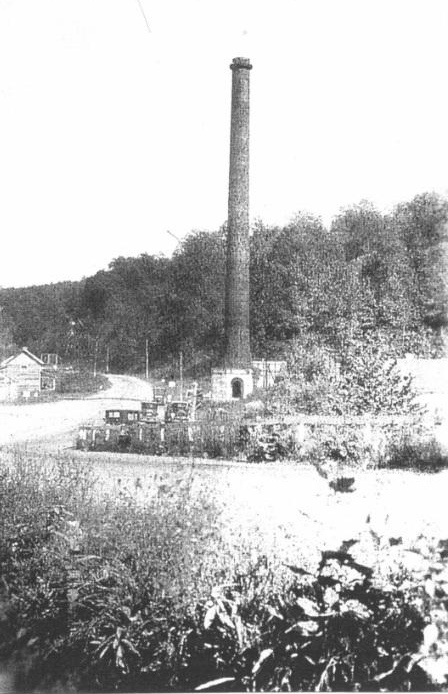 Hamilton & McCoy built the Hecla Furnace in 1833. With a capacity of 10 tons, the furnace operated until 1897. In 1828, Robert Hamilton of Hamilton & McCoy opened the Pine Grove Furnace. It was a Pine Grove that Hamilton made history. Convinced iron was one of God’s creations for the use of man, Hamilton decided to respect God’s commands and close on the Sabbath Day.
Hamilton & McCoy built the Hecla Furnace in 1833. With a capacity of 10 tons, the furnace operated until 1897. In 1828, Robert Hamilton of Hamilton & McCoy opened the Pine Grove Furnace. It was a Pine Grove that Hamilton made history. Convinced iron was one of God’s creations for the use of man, Hamilton decided to respect God’s commands and close on the Sabbath Day.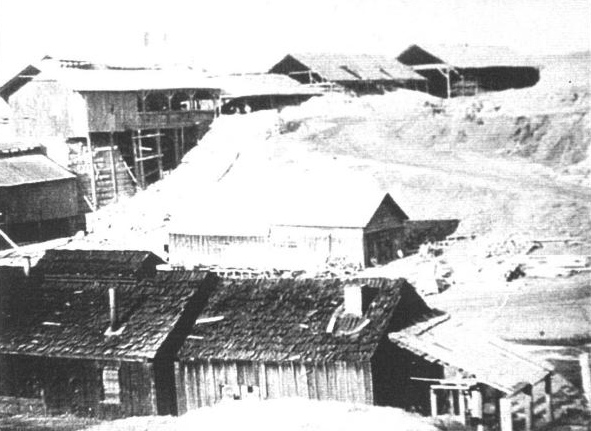 In 1834 Lawrence Furnace, also known as Crane’s Nest Furnace, was built by J. Riggs and Co. The furnace has a 40 foot stack and a capacity of 15 tons. J. Riggs and Co. included Joseph Riggs, Andrew Ellison, Robert Hamilton, James Rodgers, and Dyer Burgess. John Campbell was the superintendent during construction of the furnace and loaned the company $1,500 during the construction of the furnace.
In 1834 Lawrence Furnace, also known as Crane’s Nest Furnace, was built by J. Riggs and Co. The furnace has a 40 foot stack and a capacity of 15 tons. J. Riggs and Co. included Joseph Riggs, Andrew Ellison, Robert Hamilton, James Rodgers, and Dyer Burgess. John Campbell was the superintendent during construction of the furnace and loaned the company $1,500 during the construction of the furnace.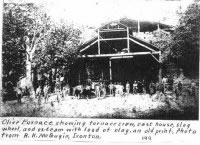 Built by John Campbell and John Peters in 1846, Olive Furnace features a unique arch. This was not the only time Peters and Campbell worked together. In 1848, Joames O. Willard, Peters and Campbell bought land together to build a railroad and a town at Hanging Rock.
Built by John Campbell and John Peters in 1846, Olive Furnace features a unique arch. This was not the only time Peters and Campbell worked together. In 1848, Joames O. Willard, Peters and Campbell bought land together to build a railroad and a town at Hanging Rock.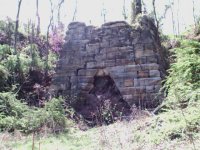 Washington Furnace could produce seven to eight tons per day and a capacity of 17 tons. In 1853, the furnace was superintended by John Peters. John Peters was the son of Henry and Rebecca (Wilhelm) Peters. Peters moved to Ohio in 1830’s. He was one of the people who helped layout Ironton and built the Iron Railroad. He also worked in Monroe, Pine Grove, Vernon, Greenup, Honeywell and other furnaces.
Washington Furnace could produce seven to eight tons per day and a capacity of 17 tons. In 1853, the furnace was superintended by John Peters. John Peters was the son of Henry and Rebecca (Wilhelm) Peters. Peters moved to Ohio in 1830’s. He was one of the people who helped layout Ironton and built the Iron Railroad. He also worked in Monroe, Pine Grove, Vernon, Greenup, Honeywell and other furnaces.  James and Findley built Buckhorn furnace in 1833. The furnace had a capacity of 15 tons. In 1899, John Peters, builder of the Washington Furnace, was the manager. Although damaged when the surrounding area was strip mined, the furnace still stands today.
James and Findley built Buckhorn furnace in 1833. The furnace had a capacity of 15 tons. In 1899, John Peters, builder of the Washington Furnace, was the manager. Although damaged when the surrounding area was strip mined, the furnace still stands today.